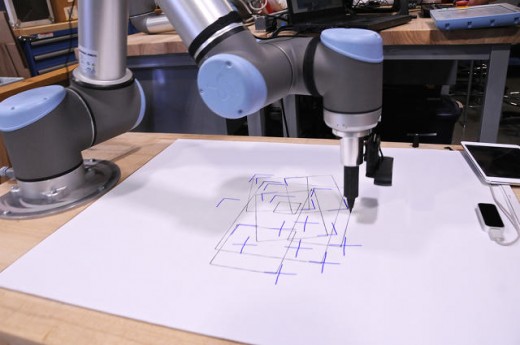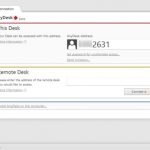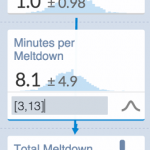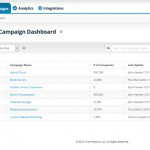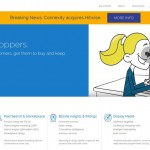unique: within Autodesk’s Robotics Lab Of the future
Our unique in the back of-the-scenes have a look at how Autodesk nearly failed to see the groundbreaking innovation proper under their noses.
July 9, 2015
in the midst of a tall, wide, two-story workspace with black walls and a convention room built inside of an orange shipping container, three industrial robots are sitting idle.
Two of them are an identical, yellow FANUCs, from Japan, the type most often utilized in automobile manufacturing or for “decide-and-position” duties. They’re called Castor and Pollux, after twin brothers from Greek and Roman mythology. right here, inside one of the vital many nearly identical maritime buildings that line San Francisco’s downtown waterfront, with out a car to build or a warehouse full of objects to pluck off shelves, they look just a little out of place. As does their neighborhood cousin, an excellent larger, orange, Swiss industrial robotic from ABB which is as but unchristened, and a smaller instrument, a common Robotics UR10 called Bishop.
that is the Pier 9 Workshop, design device large Autodesk’s private maker area, 27,000 sq. toes of wood shop, steel store, three-D printers, electronics, and even a business kitchen.
It’s additionally the home of Autodesk’s utilized analysis Lab and, as fast company is the primary to expose, the company’s new Robotics Lab, which had been underneath wraps in view that February. Castor, Pollux, Bishop, and their Swiss cousin aren’t out of place at all.
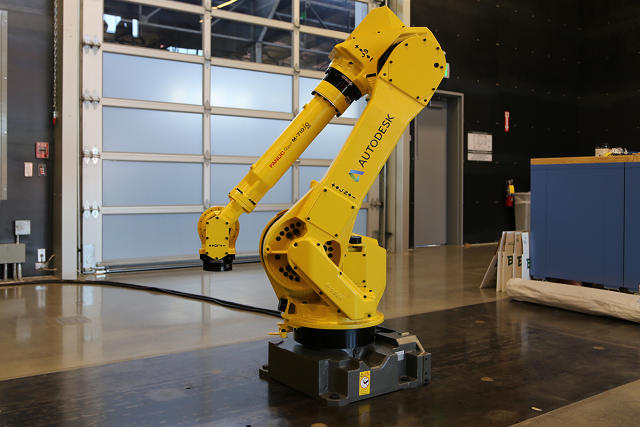
With customers in virtually each main business that you would be able to imagine, Autodesk was unquestionably neatly aware about how robots had develop into a mature industry know-how over the last a few a long time. It simply hadn’t idea so much about how robots will work along side software, and other people, in the future. Their thinking changed a couple of 12 months ago.
For Maurice Conti and his colleagues, the light-bulb second got here once they noticed the know-how in the back of the Oscar-profitable special results in Gravity.
Blind Spots
Conti is the head of Autodesk’s applied analysis Lab, and the director of strategic innovation within the company’s place of work of the CTO—OCTO, which explains the Octopus on the again of his business card. He’s received darkish hair, a very simple smile, and a salt-and-pepper goatee, and ultimate month, sitting within Pier 9 next to a unicorn cranium and a purple R2 unit (as in celebrity Wars‘ R2-D2) that had starred in the viral video “Artoo in Love”, Conti recalled the lab’s origins.
Autodesk built an $eleven billion industry by means of promoting design tool utilized in countless companies, huge and small. From one-particular person structure shops to multinational construction firms, from Hollywood visual-results studios to oceanographic institutes, Autodesk’s instruments—Maya, AutoCAD, 3ds Max, Fusion 360, and many others—are trade-standard merchandise.
The applied research Lab has a unique, enviable, but arduous to pin down mandate: selecting what Autodesk doesn’t but comprehend, but will want to understand in five years. Or 100.
CTO Jeff Kowalski “stated, ‘i want you to go seem in our blind spots,’” Conti instructed me. “and i mentioned, ‘Oh, by using definition which you could’t inform me where to discover.’”
precisely.
In 2013, Conti’s crew gave the big boss, Autodesk CEO Carl Bass, a presentation on the way forward for manufacturing. It highlighted four technologies: Additive, reminiscent of three-D printing; Subtractive, corresponding to computer-controlled slicing machines known as CNCs; Bio/Nano, such as artificial biology; and Robotics.
Autodesk was once already all over the first three, having invested years and fortunes into creating businesses round them. now not so with Robotics. “We [had] nothing in point of fact happening [there],” Conti stated. “No technique, no imaginative and prescient, no point of view. This [was] an actual downside.”
round that very same time, Conti’s workforce visited Bot & Dolly, a robotics startup Google sold in 2013, that had created a device for controlling industrial robotic palms, like those used in automotive manufacturing, for filmmakers.
should you watched Gravity, the Sandra Bullock film about an astronaut caught up in a disaster on the global house Station, you’ve considered Bot & Dolly’s Academy Award-winning tech in action. Their intent is to make use of cameras mounted on these robotic arms to shoot live-action with the same single pixel precision Pixar employs when making its pc-generated motion pictures.
“We went to Bot & Dolly and i went ‘Oh, shit,’” Conti stated. “I actually went, ‘Oh, shit. we’re not paying attention to [robotics] the way we will have to be.’”
That was ironic, for the reason that Bot & Dolly used Autodesk’s device to program its robots. It’s simply that nobody at Autodesk had ever imagined one of these thing.
“The robotics platform at the back of Gravity is all ours,” Conti mentioned, “and we didn’t even are aware of it, as a result of it was once by no means meant for use that way.”
Robotics, in other words, was once a blind spot. It was time for some vision.
The Autodesk Robotics Lab
walking into Autodesk’s lab, the only notable job is from Bishop, which is a type of device referred to as a collaborative industrial robotic arm, that from afar at least, appears to be doing little more than drawing primitive shapes on paper.
That is smart, although. in the end, the ability continues to be new, and Conti and his crew still pretty much don’t be aware of what they don’t learn about these machines.
One thing Conti does comprehend is that in traditional industrial settings, large manufacturing robots are scary as hell to the company suits. They’re big, they move quick, and that’s why they’re regularly kept inside of cages, or laser curtains, the place they do their jobs and folks aren’t allowed in.
They’re “dangerous,” Conti mentioned. they are able to “smear you everywhere the wall, and you wouldn’t understand it used to be doing it” unless it was too late.
When Conti’s team decides it’s time to discover a new space, like robotics, that implies “asking a variety of questions, and…making a number of chums who’re smarter than us,” he stated.
After lots of those conversations, including at Bot & Dolly, Conti concept that one route to pursue may well be figuring out find out how to collaborate more with robots—to make it imaginable for folks to work side by using side with industrial robots with out being smeared against the wall.
One idea is programming the robots to observe people and examine the tasks the humans are doing.
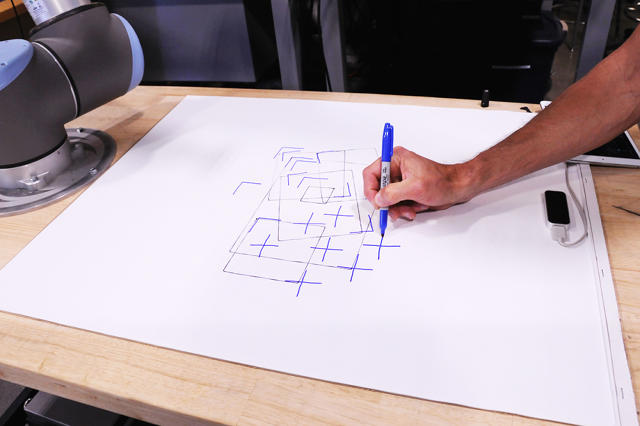
“that might [lead to] a extra creative, fluid interchange between robots and people,” mentioned David Thomasson, a fundamental research engineer, and a member of the 5-person Robotics Lab group. “There’s a robot watching a craftsman, as an instance, carving timber. And it’s learning the sorts of cuts you favor, and it may well come in and repeat them, or make diversifications of what you do, for your type, so that you may each be working on a job together.”
As Thomasson places it, people are good at sensing and downside solving, whereas robots are just right at potential and repetitive actions. With enough software expertise, robots can analyze finesse too.
instructing the machines to learn from the people way making use of computer imaginative and prescient in addition to basic sensing technologies to the issue so that the robots can grasp how people move and reproduce their motions.
“The more we will provide you with instrument that can study and understand its setting,” Thomasson stated, “the extra capable the hardware’s going to be. That’s an important reason we see [Autodesk has] a place in robotics as a company, as a result of an increasing number of, it’s a device problem.”
moving past CAD
for a company that has made big amounts of cash from computer-aided design tool, you’d think it will be sacrosanct. maybe not, Thomasson suggests. He explains that one “internally disruptive” robotics mission is in truth imagining a future without CAD instrument.
the idea is that robots could research a visual language for chopping shapes far extra exactly than people may ever do via hand.
“If I might put a little bit of plywood on a workbench, and with pencil marks indicate what i would like lower out,” Thomasson said, “the robotic watches, after which strikes in and cuts what i would like.”
Thomasson shows me that he can draw nook marks on a piece of paper, and Bishop responds via drawing a rectangle the usage of those corners. at this time, all it may well do is draw, but that’s an early proxy for a laser cutter.
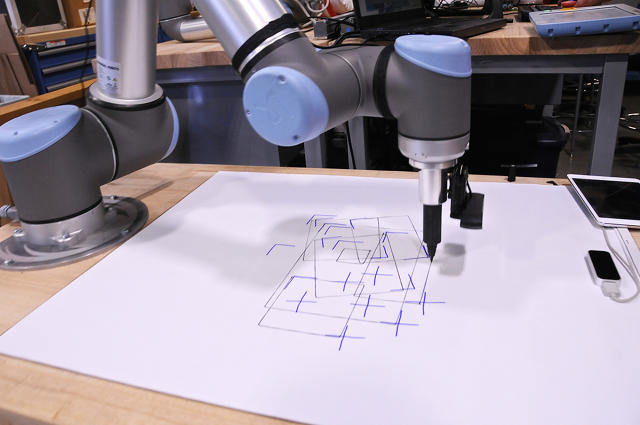
Like many things at Autodesk, the incentive for this particular undertaking was Bass, the CEO, a person smartly-known inside the firm for his DIY talents.
Bass had requested why a robot couldn’t cut a shape drawn via a human. “‘Why will have to i have to leap on a pc to do this,’” Thomasson recalled Bass asking. “‘Why can’t I just gesture it?’ That became my mission for the next few weeks. That’s one of the crucial great things about having a maker as a CEO.”
Printing A Bridge
It’s still just a little too early to grasp all of the methods Conti’s crew plans on using its robots.
one way will probably be working in parallel with a mission in Amsterdam to 3D-print a bridge. That mission will contain an industrial robotic printing the bridge in stainless-steel “in mid-air,” Conti explained.
The technology doesn’t quite exist yet to tug that venture off, so as it proceeds, and because the Amsterdam group on the design agency MX3D boost their code, they may be able to send it back to Autodesk, the place “we will tweak it, and send it back,” Conti mentioned.
on the similar time, the Robotics Lab group is working on new the right way to keep an eye on its industrial robots. One large intention, Conti said, is to get Castor and Pollux to collaborate in real time with high precision.
in part, then, that implies arising with tasks the two robots can do together. Conti stated he’s no longer sure yet what those jobs could be, but one could be projection mapping, a technique for the usage of software to project imagery on irregular shapes like structures, cars, or even footwear.
amongst Autodesk’s inspirations for entering projection mapping is the Bot & Dolly short movie “box,” which showcases a surprising use of tool and precisely controlled robots.
a hit technology transfer
even though the applied analysis Lab most often doesn’t fear about having to fast productize its work, that doesn’t mean that it never does.
When the staff finds methods with commercial potential, it brings in Autodesk product leads as early in the process as conceivable so that everybody shares the resulting insights.
“If I were to go to the top of [an Autodesk product] division with a binder of stuff, pronouncing, ‘You guys will have to be engaged on robotics,’ it’ll never happen,” said Conti. “It’s not the hand-off. It’s not, ‘We’ve written a bunch of code, now you guys go build a product.’ It’s, ‘Yeah, it’s fascinating, let’s explore it together.’”
That, Conti added, “is after we let go.”
That’s already came about to a definite extent with robotics, as the staff has give you all-new strategies for controlling the robots the usage of Dynamo, an Autodesk visual programming language. They’ve additionally developed methods to use Fusion 360, the company’s mechanical design and engineering platform, to work with the robots.
collectively, these two tasks have already made the Robotics Lab’s work “one of the vital a hit expertise transfers we’ve carried out,” Conti stated, “as a result of it happened very, very quickly.”
That rarely way the lab’s work is finished. It just means that maybe Conti and his colleagues should seem a bit further into the future to look the subsequent blind spot. and so they’ll must make more sensible pals.
“we will continue to do robotics,” Conti stated, “but it may appear very different than it does nowadays. If I might let you know [what it will look like], then we wouldn’t be taking a look some distance sufficient out.”
quick company , learn Full Story
(202)

